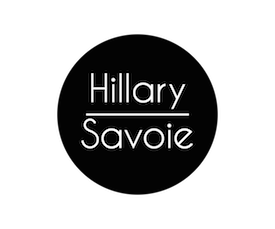Today I meant to write a post on January 20th, the International Day of Acceptance–a day devoted to the social acceptance of disability. I mean, I suppose I am still writing something about that in a way…but all of the lofty thoughts I started having about what acceptance means, about the goals beyond acceptance–where people are celebrated for their diversity of abilities and precious gifts–seem to have floated away as I find myself thrashing around in the reality of working through the latest conundrum of life with Ezzy–(all while trying to keep this awful sinus infection she’s fighting from settling into her lungs).
This latest puzzle has arisen because of our insistence that there is a path forward for Esmé that will draw out some of the abilities and gifts we see inside her. For us it has never been enough to just keep Esmé safe. Obviously she needs to be safe, but it is not enough. When I look at my child–and when just about anyone who takes the time to know her looks at her–it is so clear that there is a tremendous depth to her. She thinks about things. She has jokes that happen in the mystery of her mind that crack her up. She loves and respects and trusts so deeply that it can just shatter me into a million pieces. She desires things–and she tries so hard to tell us what those things are.
I want so very badly to find a structured environment to help her better achieve whatever it is that she is capable of…the trick, reader, is what the heck such a place might look like. She doesn’t fit in any boxes that we can find…or maybe she fits in a lot of them, but uncomfortably.
Safety First
It is not enough to just keep her safe–she needs to be challenged, drawn out. She needs to have the chance to explore herself, her world, her peers. At the same time, we cannot let her safety slide. She is in a better place medically than anyone could have anticipated two years ago and this–which has consumed so much energy for the last four years–is the result of an elaborate scaffolding of understanding (and responding to) her needs. I have said it a thousand times, but being a good caregiver for Esmé is entirely independent of medical skill level. The best trained nurse in the world is useless to Esmé if that nurse isn’t willing to learn Esmé, to recognize that the rules she is used to living by might just go out the window, to changing treatment plan based on Esmé’s emotional state, to reading between some very muddy lines.
This is essential because Ez only acknowledges rules in order to break them–she can be terribly sick and making gains in physical abilities. She can have pneumonia with “good” lung sounds. She can be thrown into a seizure-inducing tantrum by a nose wipe or a temperature scan. Her behavior, her emotions, her ability to communicate are all inextricably linked with her well being. She needs a nurse or trained (by us) aide with her at all times. But it cannot be just anybody…it needs to be someone with the interest, skills, and training that is appropriate to Esmé.
Speaking of Behavior
Esmé has all kinds of challenges that can be grouped into social/behavioral challenges that are “austic like.” She is obsessive, enjoying and relaxing into predictable routines. Lately if she is panicking about something I can calm her by counting to 8 over and over and over in a calm tone. If I count to 10 instead, she looks at me like she will be calling her lawyer later in the day in order to draw up the paperwork to disown me (Phil, aka Ezzy’s attorney, please keep an eye out for that call).
She is responsive to music in uncanny ways. She loves patterns. There are all manner of sensory things that make her inconsolable…we are just beginning to scratch that surface. She also seems to have some sensory processing problems and she is overwhelmed by certain environments and types of sound.
However, she is also highly social. She loves people–especially people who are interested in whatever she is interested in doing. She is very loving and affectionate. She demonstrates her investment in her caregivers by turning to them for approval and acknowledgement. She is sensitive to mood changes (sometime appropriately, sometimes not). She responds to different people differently. She makes consistent and meaningful eye-contact. She is not terribly interested in her peers…but I see that changing slowly as her exposure increases.
And treating any of these behavioral challenges can only be approached with care, considering her tendency to hold her breath in response challenging some of these behaviors. The breath-holding can induce seizures and also has aspiration risks.
Oh, Yeah, and That Movement Thing
On top of all of these things Esmé’s severely low tone, gross motor delays, and suspected movement disorder further muddies the water. How much of what we ask of her is she physically unable to do? Esmé is super vulnerable in a classroom with other children. She is unstable in a seated position. She likes to hang out on the floor on her back while swinging her legs around…she is just asking to be tripped over and trampled by her peers–all of whom are alarmingly larger than her. But you cannot contain the Ez. She needs to move constantly. Placing her in a chair during class for long periods of time would just break her.
In fact, I think that we saw a huge leap cognitively when we moved to a house with a large living room that she could explore. We let her explore a lot…she also falls a lot, but she gets back up and keeps going. We don’t like the idea of containing her or limiting her any more than is absolutely necessary.
Keep Up!
Ezzy is smart. There is absolutely no doubt about that. There is also no doubt that she takes in information differently than the average kid. I think that putting her in a classroom with her typical peers could be a great opportunity for her to learn new things, to approach learning differently…but I also am afraid about things moving so fast that she can’t keep up–that it will only serve to highlight how she is different for her…that she might shut down. At the same time, I’m afraid of putting her in a class that doesn’t offer that determined, competitive little creature a high bar to reach for.
The thing is that people who don’t know better are constantly shocked by what this tiny, wiggling, distracted, non-verbal child can do. This is why I bring videos to meetings with doctors, teachers, and therapists…seeing is believing after all.
Yes, she is basically potty-trained…except that we don’t always have a good way to communicate about it, or somewhere where she can physically sit on a potty (I have held her over a full sized public toilet on a number of occasions and, let me tell you, it is not pretty–imagine wrangling a small wiggling crocodile that wants to dive into the toilet, touch everything disgusting, and will bite your fingers to get you to let go–all while counting calmly to 8 and crouching above a disgusting floor).
Yes, she knows her numbers, letters, colors, and shapes…you should see the looks I get about this, like I said she communicates via telepathy (which she also totally does, but I’m not going to tell anyone that the first day I meet them, now am I?).
Yes, she understands everything happening around her.
But, also, she is vulnerable, needy, and fragile…and she just doesn’t seem to fit in any of the boxes we can find so far.
I guess that means we will have to build a box for her?…or is it something else entirely? Not a box at all?

